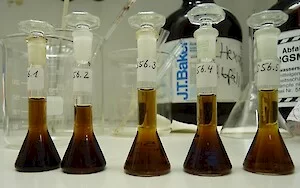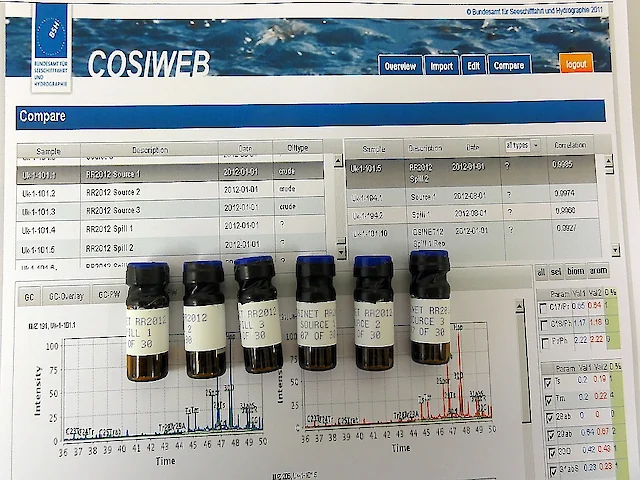Oil Spill Identification
Oil spill identification and analysis
 OSINet was initially established as an expert working group to address issues of oil spill identification and to develop standards for oil sampling by describing sampling techniques in a Manual and by developing a common analytical method that can be accepted and used by all Bonn Agreement laboratories. These tasks have been addressed by approving Chapter 32 of the Bonn Agreement Counter Pollution Manual on “Guidelines for the Exchange of Oil Samples/Results between countries and on Oil Spill Identification” and by working on the generally accepted analytical method described in the published CEN Technical Report 15522-2.
OSINet was initially established as an expert working group to address issues of oil spill identification and to develop standards for oil sampling by describing sampling techniques in a Manual and by developing a common analytical method that can be accepted and used by all Bonn Agreement laboratories. These tasks have been addressed by approving Chapter 32 of the Bonn Agreement Counter Pollution Manual on “Guidelines for the Exchange of Oil Samples/Results between countries and on Oil Spill Identification” and by working on the generally accepted analytical method described in the published CEN Technical Report 15522-2.
Intercalibration tests
OSINet’s objective to promote quality assurance in oil spill identification is achieved by annual meetings and annual intercalibration exercises/ring-tests (“Round Robins”), organised by the Network. These tests involve different oil products/types and each time address different problems connected with spilled oil identification. Samples of oil from real or fictitious cases are sent to the laboratories for analysis with a request to return their results. Reports on the final results from the ring test are here:
Report RR 2004: The comparison of three gas oil samples
Report RR 2005: The comparison of four bilge samples
Report RR 2006: First round robin test within Bonn-OSINet. The comparison of 4 crude oil samples
Report RR 2007: The comparison of six HFO samples
Report RR 2008: The comparison of three crude oil samples
Report RR 2009: The comparison of six bilge samples
Report RR 2010: The comparison of HFO and Crude Oil Samples
Report RR 2011: The comparison of 7 HFO Samples
Report RR 2012: to be added
Report RR 2013: The comparison of four samples from an oil spill in a Swedish harbour
